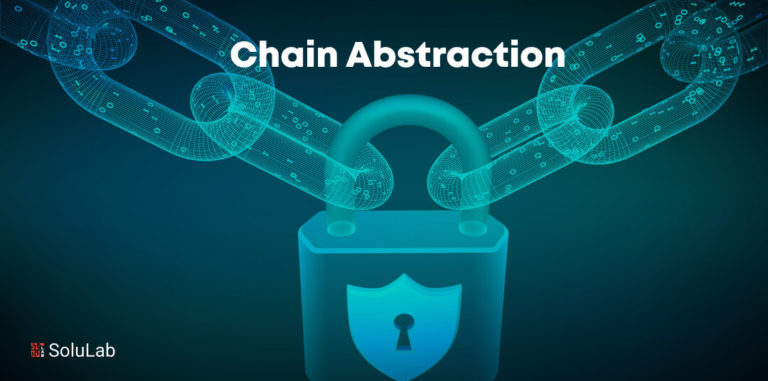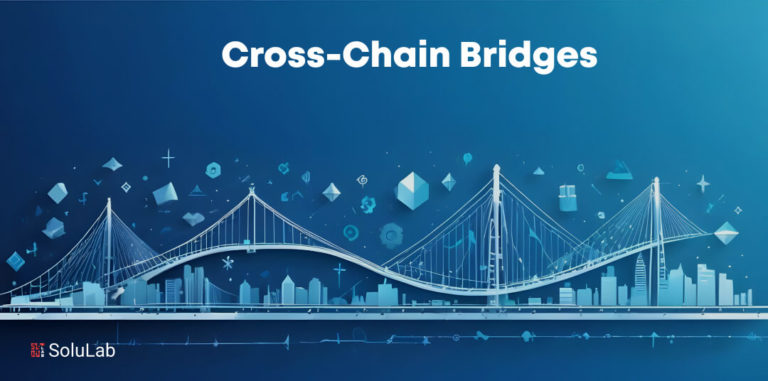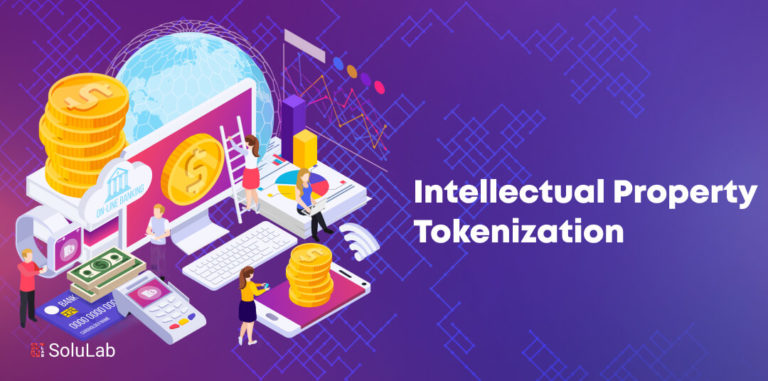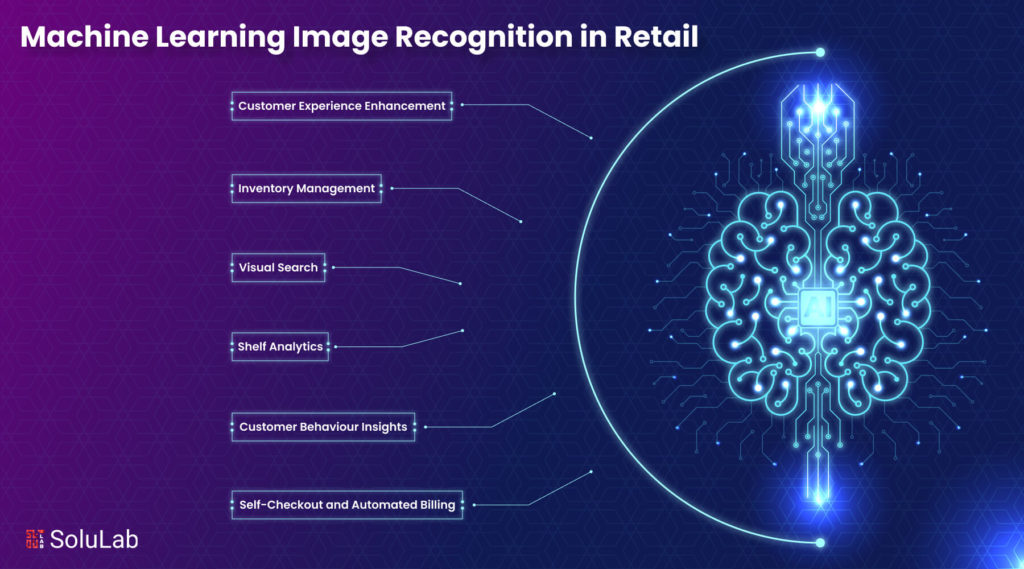
Humans outperform computers in visual performance due to their superior picture interpretation, parallel processing capabilities, and contextual knowledge. Image recognition refers to computers’ capacity to learn to see and comprehend photographs.
Machine learning image recognition is an essential element of computer vision since it can detect objects as distinct entities as well as other variables in an image. Although it is a difficult task for robots that require a lot of computer power, the worldwide image recognition industry is predicted to reach $42.2 billion.
Here, we’ll look at how machine learning image recognition is feasible in the retail industry. So, let’s get started!
A Short History of Image Recognition in Retail
First, let’s define retail image recognition technology. Essentially, it is a combination of computer vision and artificial intelligence, with numerous approaches that help detect and interpret pictures in the same way that people do, but in a more structured and automated manner. This approach is known as AI-based object detection, and it is equivalent to the system’s ability to comprehend every detail of a digital image.
This technology’s maturity may surprise you—it has been under development for quite some time. To avoid overloading you with historical context, we have summarized the important phases of image recognition retail history in our table.
| Era | Time Frame | Developments and Applications in Retail |
| Initial Developments | 1950s – 1990s | Image recognition research began in the 1950s, and primitive barcode scanners for product identification were launched in the 1970s. |
| Machine Learning | 1990s – 2010s | Machine learning breakthroughs in the 1990s enabled barcode scanners to read 2D codes, and in the late 2000s, image recognition skills grew beyond basic barcodes. |
| AI Revolution | 2010s – Present | Since the 2010s, the growth of artificial intelligence and deep learning has made possible applications such as face recognition for tailored marketing, self-checkout systems similar to Amazon Go, virtual try-on apps, and automatic shelf scanning. |
| Future Prospects of Image Recognition in Retail | Look Ahead | AI is likely to improve retail further with AR/VR inclusion for immersive experiences, tailored suggestions based on face recognition and behavior analysis, and optimal shop layouts using dynamic pricing techniques. |
Overview of Machine Learning Image Recognition

Machine learning image recognition refers to the use of algorithms and statistical models that enable computers to interpret and understand visual data from the world, such as images or videos. This technology involves training models to identify objects, classify images, detect features, and even recognize patterns within the visual data. Here’s a breakdown of how it works and its key components:
1. Data Collection and Preprocessing
- Data Collection: Gathering a large dataset of labeled images. Labels are tags that describe what is in each image (e.g., “cat,” “dog,” “car”).
- Data Preprocessing: Preparing the data for analysis. This includes resizing images, normalizing pixel values, augmenting data (e.g., rotating, and flipping images to create variations), and sometimes annotating regions of interest.
2. Feature Extraction
- Manual Feature Extraction: Historically, engineers would manually design features to help the machine learning model identify important aspects of the images.
- Automatic Feature Extraction: Modern approaches use deep learning, particularly convolutional neural networks (CNNs), to automatically learn the important features from the raw image data.
3. Model Training
- Choosing a Model: Common models for image recognition include CNNs, which are particularly effective at handling the spatial hierarchies in images.
- Training the Model: Using labeled data, the model learns to map input images to their corresponding labels. This involves adjusting the weights of the network to minimize the difference between the predicted labels and the actual labels. This process is done using techniques like backpropagation and gradient descent.
4. Evaluation and Validation
- Testing: The model is tested on a separate set of images (not used during training) to evaluate its accuracy and performance.
- Validation: Techniques like cross-validation help in fine-tuning the model and preventing overfitting (where the model performs well on training data but poorly on unseen data).
5. Deployment and Inference
- Deployment: The trained model is integrated into an application or system where it can analyze new images in real-time or batch mode.
- Inference: The process of making predictions on new, unseen images using the trained model.
AI Vision Applications in Retail
Retail image recognition technology is transforming the retail industry by enhancing customer experiences, streamlining operations, and optimizing inventory management. By using image recognition with machine learning, retailers can unlock numerous applications that drive efficiency and improve service quality. Here are some key applications of retail image recognition software:
1. Customer Experience Enhancement
- Personalized Recommendations: Retail image recognition technology can analyze customer behavior and preferences by examining images of products they interact with. This data can be used to offer personalized product recommendations, enhancing the shopping experience.
- Virtual Try-Ons: Using augmented reality (AR) and image recognition, customers can virtually try on clothes, accessories, and even makeup. This allows shoppers to see how products will look on them without physically trying them on, increasing engagement and satisfaction.
2. Inventory Management
- Automated Stock Monitoring: Retail image recognition software can track inventory levels in real time by analyzing shelf images. This ensures that shelves are always stocked, and products are placed correctly, reducing out-of-stock situations and optimizing restocking processes.
- Shrinkage Prevention: By monitoring store aisles and storage areas through cameras, image recognition technology helps detect theft or misplaced items, thus minimizing inventory shrinkage.
3. Visual Search
- Product Discovery: Customers can use visual search functionality to find products by uploading images. For instance, if a customer sees a pair of shoes they like on social media or in the real world, they can upload the image to the retailer’s app to find similar products available for purchase.
- Enhanced Search Accuracy: Image recognition with machine learning improves the accuracy of search results by understanding visual content better than traditional text-based searches.
4. Shelf Analytics
- Planogram Compliance: Retailers can use image recognition to ensure products are placed according to planograms. This helps maintain consistency in product displays and optimizes shelf space for better sales performance.
- Promotion Analysis: By analyzing shelf images, retailers can track the effectiveness of promotions and product placements, adjusting strategies based on real-time data to maximize impact.
5. Customer Behavior Insights
- Foot Traffic Analysis: Image recognition technology can track customer movements within the store, providing insights into high-traffic areas and customer preferences. This data helps in optimizing store layouts and product placements.
- Demographic Analysis: Retailers can gather demographic information such as age, gender, and mood from in-store cameras, allowing for more targeted marketing and personalized shopping experiences.
6. Self-Checkout and Automated Billing
- Faster Checkout: Retail image recognition software enables self-checkout systems where customers can simply scan their items and pay without waiting in long lines. The technology accurately identifies products and calculates the total, streamlining the checkout process.
- Error Reduction: By automating the checkout process, image recognition reduces human errors in billing, ensuring customers are charged correctly for their purchases.
Benefits of Image Recognition for Retail
Establishing the perfect store to rival giants like Walmart using image recognition software may seem impossible. Still, with image recognition for retail technology, you can certainly improve customer experiences and increase profitability. Here’s how the greatest image recognition machine learning may revolutionize essential retail operations:
-
Sales Enhancement
Image recognition technologies increase sales by ensuring precise pricing, appropriate shelf availability, and efficient planogram execution. Retailers may unlock huge sales growth prospects by avoiding stockouts, which can cost up to 46% of potential revenues.
Related: Guide to Building Credit Risk Models with Machine Learning
-
Better Support for Customers
Major parts of customer service, such as product availability and quick checkouts, are improved with image recognition software. Streamlining self-service checkout processes, improving stock management, and addressing frequent consumer concerns about stock shortages and sluggish service make shopping more efficient and enjoyable.
-
Improved Audit Efficiency
For retail, image recognition lowers the expense of team trips to several sites and the requirement for human inspections. Retailers may obtain data more rapidly using real-time item recognition, hastening audits, and the application of required enhancements.
-
Systematic Growth
It is more difficult to obtain insights into sales patterns and market potential through periodic reports than from real-time picture data. Retailers are able to quickly take advantage of new possibilities and adjust to changes in the industry because of this visibility.
-
Enhanced Retention of Staff
Recognition software helps streamline inventory management and in-store audits for personnel, which improves job satisfaction and helps retain staff—as 39% of retailers seek to make regular activities easier for their staff.
Use Cases of Image Recognition in the Retail Industry 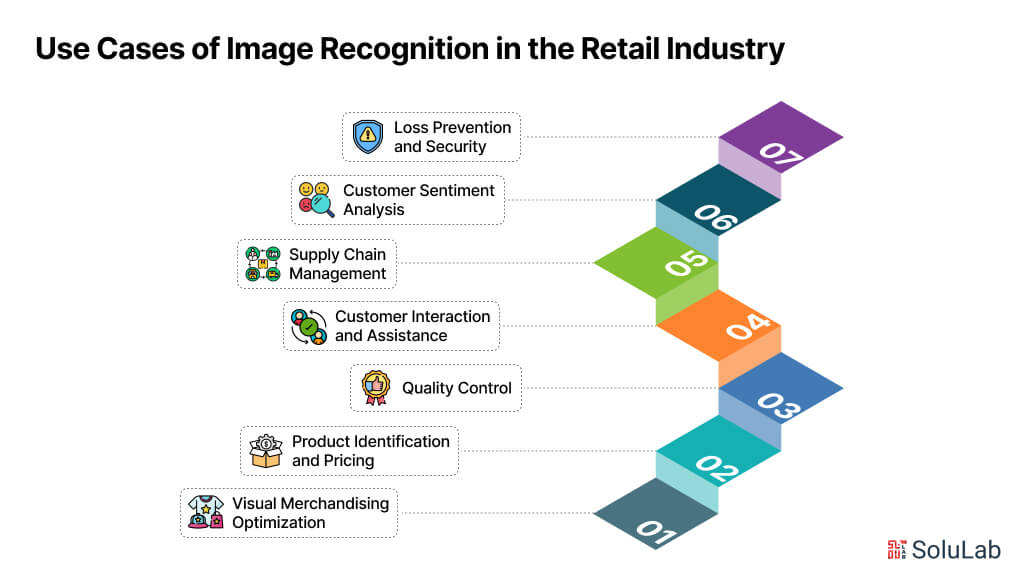
Image recognition technology has found numerous innovative applications in the retail industry, addressing challenges and creating opportunities for enhanced efficiency and customer engagement. Here are some specific use cases of image recognition in retail:
1. Visual Merchandising Optimization
- Shelf Layout Analysis: Image recognition systems can analyze shelf layouts to ensure products are displayed according to strategic plans. This helps maintain visual consistency across stores and ensures that high-margin products are given prime shelf space.
- Display Effectiveness: By capturing and analyzing images of product displays, retailers can assess the effectiveness of their visual merchandising efforts. This data helps in refining display strategies to attract more customers and drive sales.
2. Product Identification and Pricing
- Automated Price Tagging: Image recognition technology can identify products and automatically update pricing information. This is particularly useful during sales and promotions, ensuring that price tags are accurate and up-to-date.
- Dynamic Pricing: By monitoring competitor pricing and demand trends through image recognition, retailers can dynamically adjust their prices to stay competitive and maximize profits.
3. Quality Control
- Freshness Monitoring: In grocery stores, image recognition can be used to monitor the freshness of perishable goods. By analyzing visual cues such as color and texture, the system can identify items that need to be replaced, ensuring high-quality products for customers.
- Damage Detection: For both online and physical stores, image recognition can inspect products for damage before they are shelved or shipped to customers, reducing the likelihood of returns and enhancing customer satisfaction.
4. Customer Interaction and Assistance
- Smart Kiosks: Interactive kiosks equipped with image recognition can assist customers in finding products within the store. Customers can show an image or describe an item, and the kiosk will provide directions to its location.
- Mobile Shopping Apps: Mobile apps integrated with image recognition allow customers to snap a picture of a product to get detailed information, reviews, and recommendations for similar items.
5. Supply Chain Management
- Automated Sorting: In warehouses, image recognition can be used to automate the sorting process. By identifying products and directing them to the appropriate locations, it enhances the efficiency and accuracy of inventory management.
- Shipment Verification: Image recognition can verify that shipments contain the correct items by comparing the contents to the order details. This reduces errors and ensures that customers receive exactly what they ordered.
6. Customer Sentiment Analysis
- Emotion Detection: In physical stores, cameras equipped with image recognition can analyze customer facial expressions to gauge their reactions to products and services. This information helps retailers understand customer sentiment and make improvements where necessary.
- Engagement Tracking: By observing customer interactions with products, retailers can identify which items attract the most attention and tailor marketing strategies accordingly.
7. Loss Prevention and Security
- Theft Detection: Image recognition systems can monitor store aisles and detect suspicious behavior indicative of theft. These systems can alert security personnel in real-time, reducing losses due to shoplifting.
- Fraud Prevention: In online retail, image recognition can verify the authenticity of returned products, ensuring that counterfeit items are not accepted and resold.
Popular Languages and Frameworks for Retail Image Recognition Applications
Creating an effective image recognition application for retail environments requires choosing the right languages and frameworks. Here’s an overview of the most popular options, their descriptions, and specific use cases:
1. Python
Python is a versatile language favored for its ease of use and robust libraries like TensorFlow, Keras, and OpenCV. Its simplicity and readability make it well-suited for developing complex image recognition applications and handling intricate algorithms.
Use Cases:
- Complex image recognition tasks
- Custom object detection and classification models
- Integration with other machine learning libraries
- Customer behavior analysis
- Automated shelf scanning for inventory management
2. Java
Known for its robustness, Java utilizes frameworks such as Deeplearning4j and JavaCV to build image recognition software. Its platform independence and scalability make it ideal for large-scale retail app development.
Use Cases:
- Facial recognition for targeted advertising or loyalty programs
- Self-checkout systems incorporating image recognition
Related: Machine Learning and Artificial Intelligence in the Automotive Industry
3. C++
Valued for high performance, C++ offers libraries like Dlib and OpenCV for real-time image recognition. Its speed and low-level control are ideal for optimizing image recognition models in resource-constrained environments.
Use Cases:
- Real-time image processing tasks
- Feature extraction and object detection
- Basic image recognition functionalities
- Real-time video analytics for loss prevention or customer behavior analysis
- Edge computing applications for on-device image recognition
4. Swift
Preferred for iOS development, Swift integrates seamlessly with machine learning models using libraries like Core ML and Vision. Its modern syntax and performance optimizations are perfect for building retail image recognition apps for Apple devices.
Use Cases:
- On-device image recognition for iOS apps
- Product recognition in shopping apps
- Barcode scanning
5. JavaScript
Commonly used for web applications, JavaScript with frameworks like TensorFlow.js and OpenCV.js allows for deploying machine learning models directly in web browsers, offering flexibility and compatibility.
Use Cases:
- Simple browser-based image recognition features
- Product search or basic object detection in web applications
6. Kotlin
Description: Interoperable with Java, Kotlin is ideal for Android app development. Libraries like TensorFlow Lite and OpenCV for Android support the deployment of image recognition models on Android devices.
Use Cases:
- Product recognition in mobile apps
- Virtual try-on experiences
7. Low-Code Platforms
Platforms like Microsoft Azure Custom Vision and Google Cloud AutoML Vision offer user-friendly interfaces and pre-built templates for training machine learning models with custom datasets.
Use Cases:
- Product identification for inventory management or targeted promotions
- Basic image classification tasks
By utilizing these languages and frameworks, developers can create powerful image recognition software that enhances the retail experience, improves operational efficiency, and drives innovation in the retail sector.
Conclusion
Machine learning image recognition is revolutionizing the retail industry by providing innovative solutions to longstanding challenges and enabling new opportunities for customer engagement and operational efficiency. From enhancing visual merchandising and inventory management to offering personalized shopping experiences and advanced security measures, image recognition technology is reshaping how retailers operate. As these technologies continue to evolve, their impact on the retail sector will only grow, driving further innovation and improved customer satisfaction.
SoluLab, as a leading AI development company, specializes in using the power of machine learning and image recognition to create tailored solutions for the retail industry. Our expertise in developing advanced retail image recognition applications ensures that your business stays ahead of the curve. Whether it’s implementing complex image recognition systems, integrating seamless mobile experiences, or optimizing inventory management, SoluLab has the tools and knowledge to transform your retail operations. Contact us today to learn how we can help you leverage innovative AI technologies to drive your business forward.
FAQs
1. What is machine learning image recognition in retail?
Machine learning image recognition in retail involves using advanced algorithms and models to interpret and understand visual data from images or videos. This technology enables retailers to identify products, analyze customer behavior, optimize inventory management, and enhance the overall shopping experience through automated processes and intelligent insights.
2. How does image recognition improve inventory management in retail?
Image recognition technology improves inventory management by automating the monitoring of stock levels and ensuring shelves are always properly stocked. By analyzing images of shelves and storage areas, it can detect low-stock or misplaced items in real time, thus reducing out-of-stock situations and improving the accuracy and efficiency of restocking processes.
3. What are some common applications of image recognition in retail?
Common applications include automated checkout systems, personalized product recommendations, virtual try-ons, visual search capabilities, planogram compliance checks, and loss prevention. These applications help streamline operations, enhance customer engagement, and provide valuable insights into customer preferences and behaviors.
4. Which programming languages and frameworks are popular for developing retail image recognition apps?
Popular programming languages and frameworks include Python (with TensorFlow, Keras, and OpenCV), Java (with Deeplearning4j and JavaCV), C++ (with Dlib and OpenCV), Swift (with Core ML and Vision), JavaScript (with TensorFlow.js and OpenCV.js), Kotlin (with TensorFlow Lite and OpenCV for Android), and low-code platforms like Microsoft Azure Custom Vision and Google Cloud AutoML Vision.
5. How can SoluLab help my retail business with machine learning and AI development?
SoluLab specializes in creating customized AI and machine learning solutions tailored to the needs of the retail industry. Our expertise includes developing advanced image recognition applications that enhance inventory management, customer experience, and security. By partnering with SoluLab, you can use modern AI technologies to drive innovation and efficiency in your retail operations. Contact us today to learn more about how we can support your business.



